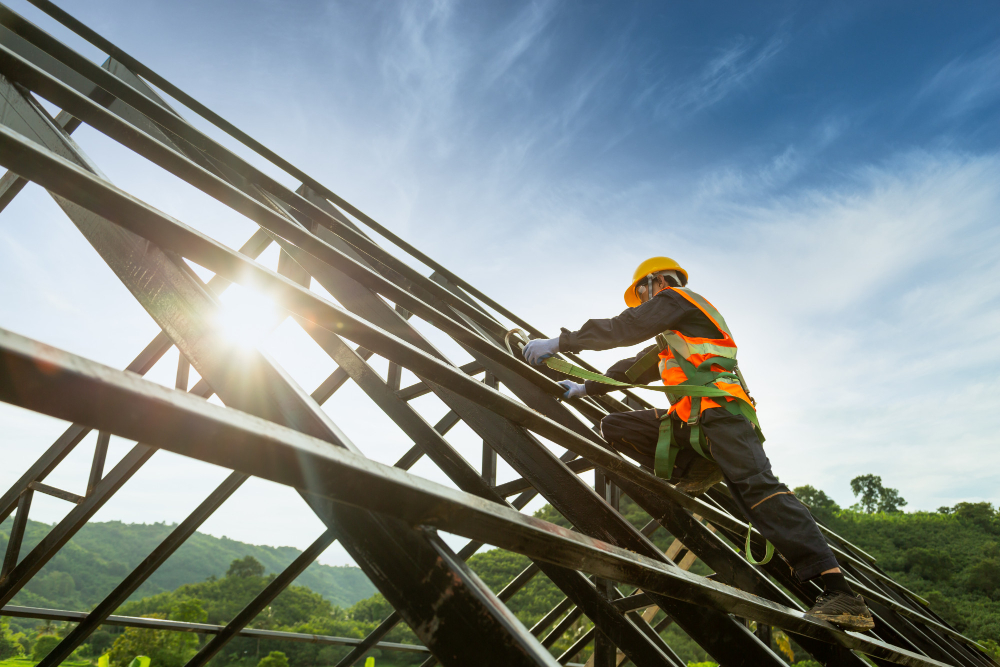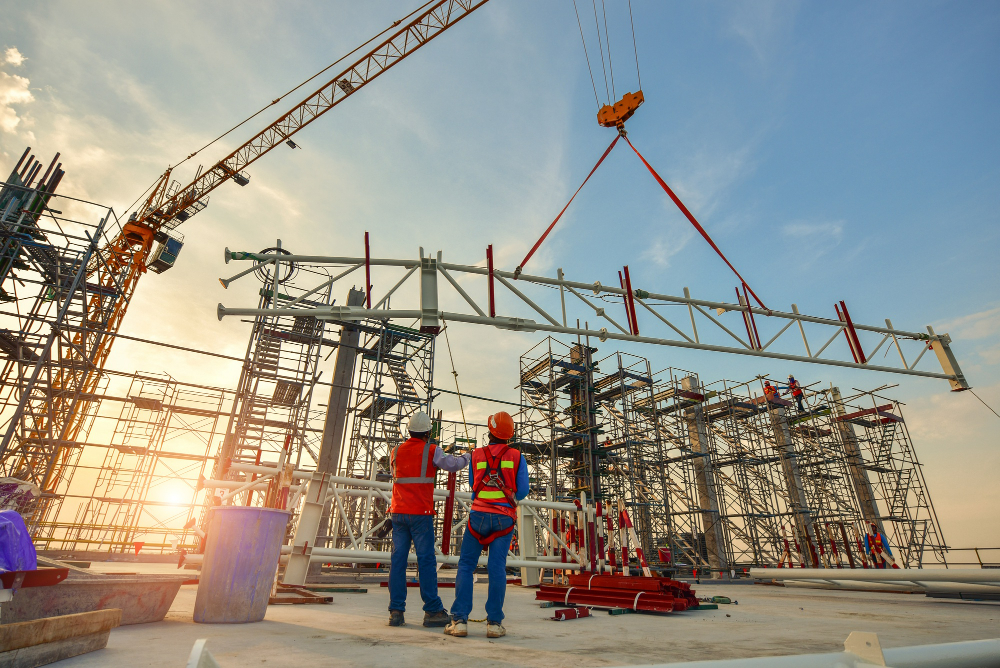Build Build Build Program Infrastructure Development Status

The Build Build Build Infrastructure Program (BBB) was the infrastructure program of Rodrigo Duterte’s administration as the Philippines’ 16th president. The program, which was a key component of his socioeconomic policy, aimed to reduce poverty, encourage economic growth, reduce congestion in Metro Manila, and address the country’s infrastructure gap. The program, which began on April 18, 2017, also included the continuation of 44 infrastructure projects started by the Aquino administration.
The government expanded the list of flagship infrastructure projects under Duterte’s “Build, Build, Build” program to 100 in November 2019. It was revised again in August 2020, bringing the total number of projects to 104, and broadening its scope to include health, information and communications technology, and water infrastructure projects to support the national economic recovery from the COVID-19 pandemic’s effects. As of September 11, 2020, 24 projects were still in the approval and planning stages, with 80 already underway.
Build Build Build Accomplishments under Past Administration
According to DPWH data as of May this year, “Build, Build, Build” projects created 6.5 million jobs in the Philippines between 2016 and 2020.
The final section of the Tarlac-Pangasinan-La Union Expressway (TPLEX), Plaridel By-Pass Road Phase II, North Luzon Expressway (NLEX) Harbor Link Segment 10 and C3-R10 Section, Skyway Stage 3, and Alabang-Sucat Skyway Extension are among the completed “Build, Build, Build” projects.
The completed road sections of the Central Luzon Link Expressway (CLLEX), Cavite Laguna Expressway, and Manila Cavite Toll Expressway are notable achievements for the road sector.
According to the DPWH, the country’s highways and expressways were expanded to allow for regional development and, eventually, to ease congestion in dense urban regions.
The Estrella-Pantaleon Bridge, the Bonifacio Global City-Ortigas Center Link Road Project, and the Binondo-Intramuros Bridge, which opened in April, were the three major projects completed under the Metro Manila Logistics Improvement program.
The Inter-Island Linkage/Mega Bridge Program will connect the country’s various islands through the construction of short and long-span bridges.
Under the previous administration, 40,080 kilometers (km) of roads were built, preserved, broadened, updated, and rebuilt, including 3,101 kilometers (km) of tourism roads; 999 kilometers (km) of completed roads leading to industries and trade corridors; 573 kilometers (km) of access roads that will improve linkages to seaports, airports, and railway stations to further augment logistics, transport, and economic activities in these key transport hubs; and 2,712 kilometers (km) of the completed farm (FMRs). While 6,854 bridges were built, widened, upgraded, rehabilitated, or strengthened.
The Asian Development Bank (ADB) and the Japan International Cooperation Agency (JICA), the government’s development partners, expressed satisfaction with the outcome of the Duterte administration’s IFPs.

List of Completed Programs under the Duterte administration
Public transportation
- LRT Line 2 east extension – 2015–2021
- MRT Line 3 rehabilitation 2019–2021
- Parañaque Integrated Terminal Exchange 2015–2018
Roads
- Boracay Circumferential Road (Phase 1 and 2)
- Cagayan de Oro Coastal Road
- Camalig Bypass Road
- Samar Pacific Coastal Road
- Sariaya Bypass Road
- Sorsogon City Coastal Road
- Urdaneta City Bypass Road
- Cebu–Cordova Link Expressway (CCLEX)
- Central Luzon Link Expressway (CLLEX)
- Metro Manila Skyway Stage 3
- SLEX Elevated Extension
- NLEX Harbor Link
- Plaridel Bypass Road (Phase 2 and 3)
- Subic Freeport Expressway Expansion
- Binondo–Intramuros Bridge
- New Estrella–Pantaleon Bridge
- Bonifacio Global City-Ortigas Center Link Road (Santa Monica–Lawton Bridge and Viaduct)
- Laguna Lake Highway
- Lawton Avenue Expansion
Airport
- Bicol International Airport Development project (New Legazpi)
- Bohol–Panglao International Airport (New Bohol International Airport)
- Calbayog Airport expansion
- Clark International Airport expansion project Phase 1
- M’lang (Central Mindanao) Airport Development project
- General Santos International Airport expansion
- Laguindingan Airport expansion
- New Manila International Airport
- Sangley Point Airport 2019–2020
- Siquijor Airport upgrading and expansion
- Cagayan North International Airport (Lal-lo International Airport)
Seaport
- Borac Port
- Port of San Fernando
- Port of Bataraza
What else to expect in the Build Build Build Projects?
To make sure a stable food supply in the midst of a global crisis and rising inflation, President Ferdinand “Bongbong” Romualdez Marcos Jr. has directed that FMRs be prioritized for easier produce transport, increasing local trade and productivity while lowering transportation costs.
Marcos, who also serves as Agriculture Secretary, has stated that he wants to develop a FMR master plan to promote food security and empower rural communities. He stated that the government must prioritize areas with active agricultural production in this endeavor to address supply chain concerns.
He also emphasized the importance of agricultural infrastructure projects being resistant to the negative effects of climate change, which means they should not be easily destroyed by floods, landslides, and other natural disasters.
The master plan must include geographic maps that show the precise locations of the farm-to-market roads that will be built, as well as the source of funding, terms of payment, and project completion date.
He also charged the Departments of Agriculture (DA) and Public Works (DPWH) with overseeing the implementation of state-funded FMR projects.
The DPWH announced on July 9 the construction of a 1.4-kilometer FMR for the farming community of Barangay Balite in Cabanatuan City, Nueva Ecija. The FMR’s construction is currently in full swing in order to meet its July completion date.
When finished, the road will provide farmers with a faster and safer route to transport their fresh produce and farm goods to Nueva Ecija’s major markets.
The road project, which is being implemented by the DPWH Nueva Ecija 2nd District Engineering Office, has a total budget of PHP11.64 million, which is coming from the 2022 General Appropriations Act.
The DPWH also reported on July 22 that the 30-kilometer CLLEX is now 96 percent complete.
According to the DPWH’s Unified Project Management Office (UPMO) Operations, the first 18 kilometers of CLLEX from Tarlac Interchange in Balingcanaway, Tarlac City to Guimba-Aliaga Road in Aliaga, Nueva Ecija will be extended by 11 kilometers by March 2023.
These include 7 kilometers to the San Juan Interchange and 4 kilometers to Umangan-Julo Road, which runs along the border of Aliaga and Cabanatuan City before Felipe Vergara Road and Daang Maharlika Highway.
Also, the CLLEX Project will support the country’s new vision for improving agricultural productivity under President Ferdinand “Bongbong” Marcos Jr.’s administration.” Using this toll-free high-standard highway, palay crops, and other products from Nueva Ecija, the Philippines’ rice granary, including those from Region 2, can reach Manila market centers much faster and cheaper according to DPWH Undersecretary for UPMO Emil Sadain.
The CLLEX serves as an important east-west link for Luzon’s expressway network, ensuring a continuous and seamless traffic flow for motorists traveling from Metro Manila to the NLEX, SCTEX, and TPLEX.
The PHP11.811-billion expressway is expected to reduce the usual travel time of 70 minutes between Tarlac City and Cabanatuan City to just 20 minutes once completed.

The “Build, Build, Build” program also includes a traffic-decongestion strategy that aims to construct high-quality highways/expressways, by-passes/diversion roads, flyovers, interchanges, and underpasses, as well as widen national roads and bridges.
The Metro Manila Logistics Improvement Program, the Philippine High Standard Highway Network Program, and the Luzon SPINE Expressway Network (LSEN) Program are among the key projects.
The LSEN is made up of 905 kilometers of high-quality highways in Luzon that will cut travel time between Ilocos and Bicol from 20 hours to eight hours.
It also includes the construction or improvement of access roads to designated tourism destinations, industrial trade corridors, roll on/roll off ports/seaports, railway stations, airports, and classroom construction under the Department of Education’s Basic Education Facilities Fund. Upcoming projects also include Mindanao Railway Project and New Clark city phases.
Build Build Build Infrastructure Program
The program aims to provide livable, sustainable, and resilient communities through an integrated water resources management program, disaster risk reduction and climate change adaptation, infrastructure support for marginalized sectors, and the construction of bike lanes/facilities and pedestrian infrastructure.




